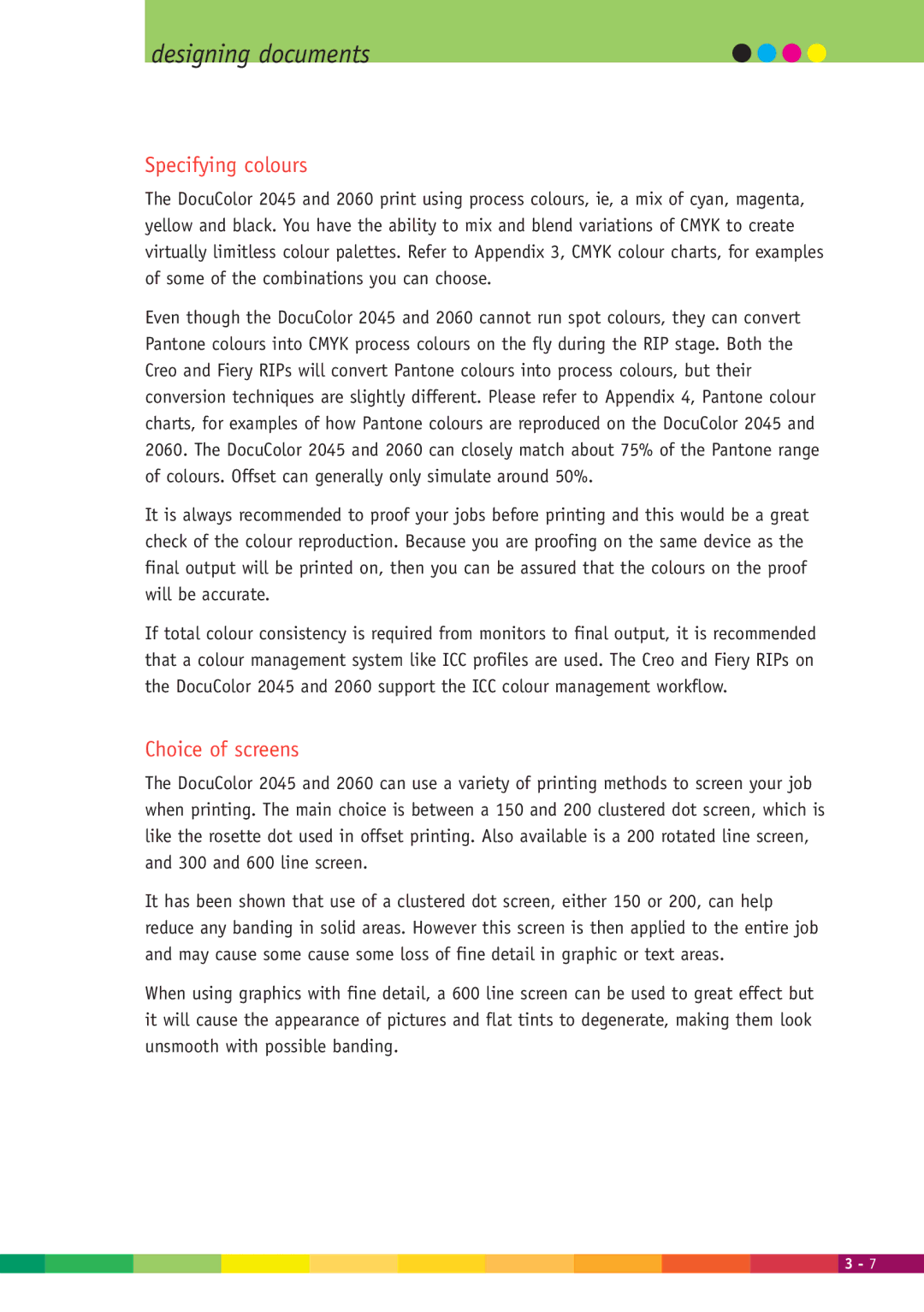
designing documents
Specifying colours
The DocuColor 2045 and 2060 print using process colours, ie, a mix of cyan, magenta, yellow and black. You have the ability to mix and blend variations of CMYK to create virtually limitless colour palettes. Refer to Appendix 3, CMYK colour charts, for examples of some of the combinations you can choose.
Even though the DocuColor 2045 and 2060 cannot run spot colours, they can convert Pantone colours into CMYK process colours on the fly during the RIP stage. Both the Creo and Fiery RIPs will convert Pantone colours into process colours, but their conversion techniques are slightly different. Please refer to Appendix 4, Pantone colour charts, for examples of how Pantone colours are reproduced on the DocuColor 2045 and 2060. The DocuColor 2045 and 2060 can closely match about 75% of the Pantone range of colours. Offset can generally only simulate around 50%.
It is always recommended to proof your jobs before printing and this would be a great check of the colour reproduction. Because you are proofing on the same device as the final output will be printed on, then you can be assured that the colours on the proof will be accurate.
If total colour consistency is required from monitors to final output, it is recommended that a colour management system like ICC profiles are used. The Creo and Fiery RIPs on the DocuColor 2045 and 2060 support the ICC colour management workflow.
Choice of screens
The DocuColor 2045 and 2060 can use a variety of printing methods to screen your job when printing. The main choice is between a 150 and 200 clustered dot screen, which is like the rosette dot used in offset printing. Also available is a 200 rotated line screen, and 300 and 600 line screen.
It has been shown that use of a clustered dot screen, either 150 or 200, can help reduce any banding in solid areas. However this screen is then applied to the entire job and may cause some cause some loss of fine detail in graphic or text areas.
When using graphics with fine detail, a 600 line screen can be used to great effect but it will cause the appearance of pictures and flat tints to degenerate, making them look unsmooth with possible banding.
![]()
![]()
![]()
![]()
![]()
![]() 3 - 7
3 - 7
